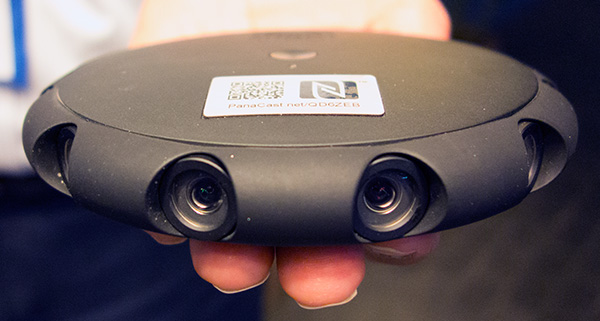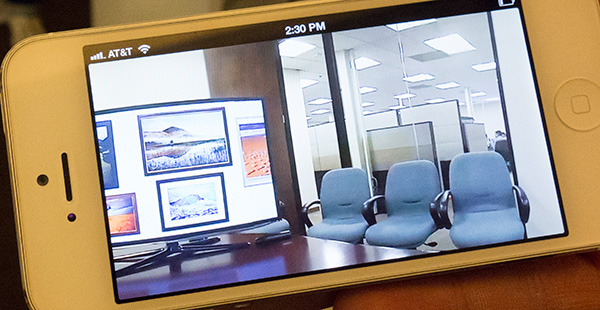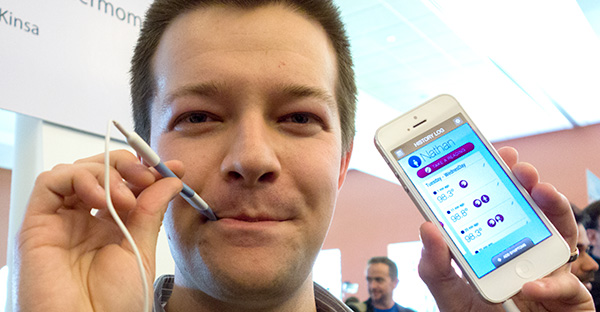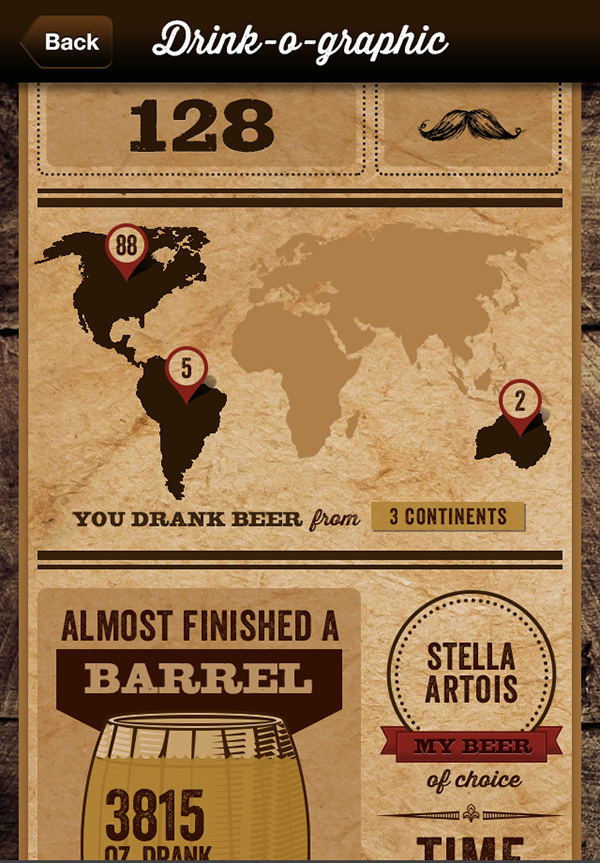aNewDomain.net — At Demo Mobile 2013 in San Francisco, I watched Mickey McManus, President and CEO of Maya Design, present the audience with two helicopter drones, a wristwatch and a bunch of illuminated balls that rolled about the stage. Projected on-screen was a mobile app. McManus lifted his finger and proceeded to drag a green dot pulling a virtual cable across the screen, connecting icons representing all three of those unlikely suspects.
Then he hit a button on the watch and up flew the choppers. I remember, as a child, dragging wires with alligator clips across a breadboard to make things blink and buzz. But McManus’s MakerSwarm is about a lot more than just blinking and buzzing.

Drone ‘copter being controlled by a ball using MakerSwarm.
McManus describes MakerSwarm as an “authoring tool for the Internet of Everything.” It has long been easy — for coders, at least — to hook things up in software with the help of APIs, or application programming interfaces. But what about unrelated hardware, like helicopters, watches and glowing balls?![]()
MakerSwarm brings interconnected bits, atoms, code and devices into a drag-and-drop world. In other words, it lets you grab hold of the capability of one device, then drag and drop it to another device on the screen. And it doesn’t have to be merely a one-to-one connection. It can also swarm numerous unrelated devices in “the cloud,” connecting a massive peer-to-peer community in “the trillion-node world.”
Wait, what? My head is exploding.
This may sound really complex, but McManus says his intent is just the opposite. This casual mash-up of atoms and bits can actually simplify the maker world for new innovators and reduce the time it takes to invent — or to create what he calls “a social network of products and services.”
The goal, he says, is to enable anyone with technical expertise to build Internet of Things experiences.
But what happens when you drag a feature to a device and the new device says, “now wait a minute, I can’t talk to you”? Why is getting a universal remote control working with your TV setup such an ordeal? That is a big problem, indeed. Fortunately, Android-based systems are fairly compatible. Maya has been working with Carnegie Mellon University on something called the “Personal Universal Controller,” which can reach into a device and generate a new interface on the fly. That would solve the problem, but, according to McManus, requires sharing information with device makers. Well, we all know how that works.
According to McManus, this is bleeding edge stuff — not even in beta yet — though some of its underlying architecture has already been used in systems to clear land mines and help researchers find new drugs for clinical trials. Maya plans to launch a Kickstarter campaign to recruit test pilots in mid-May, offering first access to MakerSwarm authoring tools and petitioning for funds to develop an introductory kit for youngsters 10 years and older. He says he expects the MakerSwarm beta to be released this summer.
Whew! I’m exhausted. Now on to the PanaCast Camera…

The PanaCast Camera
PanaCast is a game-changer for teleconferencing, live virtual tours and even interactive television. It consists of a six lens camera, which should be colored green as it looks like a cartoon space toad, that captures and stitches together a 200-degree, live, high-definition panoramic image. On the other end there is an app that can be swiped, pinched and otherwise controlled by individual viewers on iPads or iPhones. Android and Windows versions are in the works.
Who needs a five- or six-figure teleconferencing system when you can buy one of these video toads for $599? You can set up cameras in several conference rooms anywhere in the world and switch back and forth between them. The viewer controls everything.
Or, fancy this: How about live virtual events and tours that each member of the audience can control?
The HD image resolution is 540px high — not exactly high definition when you zoom in, but the entire image, zoomed out, is a whopping 2700px wide. On a fast connection it runs at 60fps. That’s faster than regular HDTV, but scaled down to lower quality it will work at connection speeds less than 400kbs, which is roughly that of 3G mobile.

Live streaming picture on PanaCast app.
PanaCast offers its own cloud video system for $19 a month per user, but the company says that it will also work with Skype or in a Google Hangout.
CEO Aurangzeb Khan told me that, given the size and low cost of sensors, these cameras could be made very small. And, I might add, very cheaply.
I would love to see artists and those pushing the boundaries of interactive video and, yes, even cable TV executives (if they can momentarily take their eyes off their spreadsheets) take PanaCast for a ride and explore its possibilities.
Other DemoGods
MakerSwarm and PanaCast were two of the five presenters awarded the badge of DemoGod at Demo Mobile 2013. The others were:

The Kinsa Smart Thermometer.
Kinsa, which makes a smart thermometer that seeks to monitor and prevent the spread of disease. It takes your temperature, then prompts you to list other symptoms such as fatigue, cough, cold, or headache. The accompanying app tells you how to avoid getting ill, or how to get better faster. All of the collected data contributes to creating a “real-time map of human health,” according to Kinsa, and providing a “health forecast” for different locations.
Volio simulates a one-on-one conversation with a real person who is actually pre-recorded on video. Using artificial intelligence, these video clips are called up instantly to react to questions, making them seem like a virtual assistant. One use for Volio is customer support, where it can offer the comfort of human contact to an automated system. Readers of Esquire Magazine, for example, can ask questions of editors who have been Volioized.
Beer Hunt, caters to craft beer lovers. Here’s a screenshot of the app:

Beer Hunt “Drink-o-graphic.”
Beer Hunt lets you log the beer you are drinking, track new beers, play games with other users/drinkers and log and create a “drink-o-graphic” — an infographic generated about your imbibing activities. Prosit!
That’s all the news that’s fit to print from Demo Mobile here in San Francisco. For aNewDomain.net, I’m Russ Johnson.
Image credits: Russ Johnson












